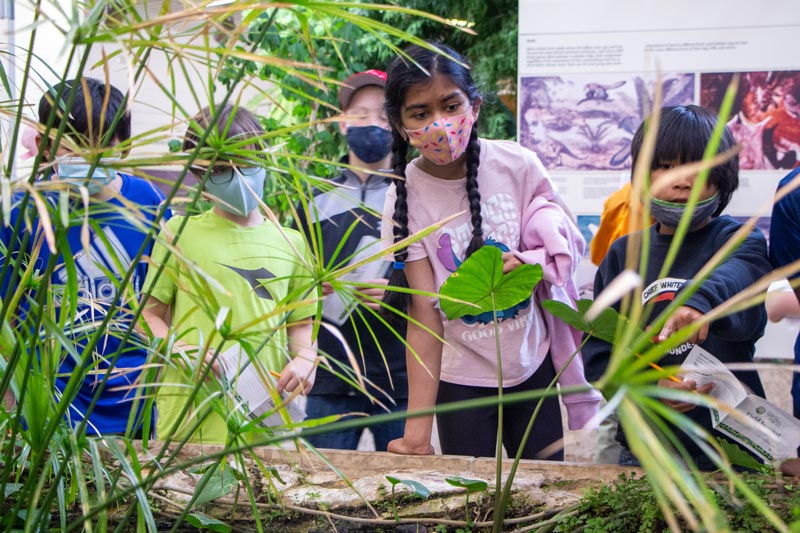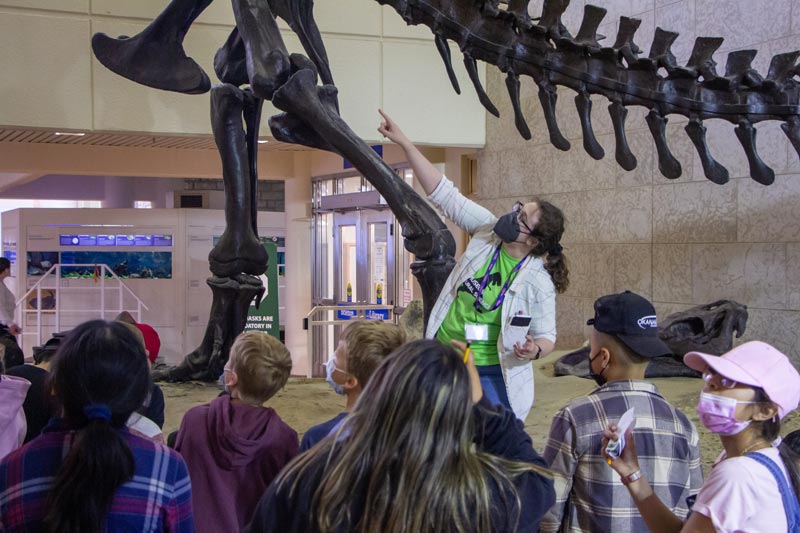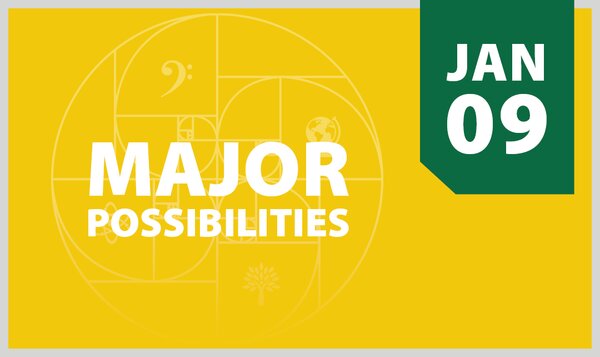
Museum field trips return to USask
About 2,400 kids from 100 classrooms took part in the field trips hosted by museums and departments of the College of Arts and Science this spring
By Chris Putnam
For the first time since the start of the COVID-19 pandemic, school groups visited the University of Saskatchewan (USask) this spring for free science-themed field trips hosted by College of Arts and Science museums and departments.
About 2,400 kids from 100 classrooms took part in the field trips over six weeks starting on May 2. Schools in Saskatoon and surrounding communities participated, with the last visits happening today, June 17.
“The kids love them. They’re excellent field trips. The kids are engaged all the time with lots of hands-on activities,” said Warren Hay, a teacher at Chief Whitecap School in Saskatoon whose Grade 4 and 5 students visited the USask campus on June 15.
The free field trips are a science outreach initiative led by the USask Museum of Natural Sciences. The University Art Galleries, the Museum of Antiquities and nine departments in the College of Arts and Science also contribute by hosting sessions.

“I think the Museum of Natural Sciences is very well-positioned to connect the university with our broader community and this is one of the ways we can do that. Seeing all the smiling young faces in the museum, and the excitement of the university students engaging them, has been a huge joy for me this spring,” said Dr. Erica Bird (PhD), manager of the Museum of Natural Sciences.
The field trips are completely free to school groups. Thanks to grants from the Community Initiatives Fund and SaskCulture, the museum was even able to pay for 40 bus trips for community school classes who needed extra support to participate.
USask hired undergraduate and graduate students to help design and lead the sessions. Along with several returning sessions, new or redesigned programs were offered this year on paleontology, rocks and minerals, math in nature, biodiversity, and geography.
Grades 4–8 students took part in activities ranging from building miniature ecosystems in cups to creating maps in the Bowl.

Rosie Rogal, a USask paleobiology master’s student, helped redesign this year’s field trip session on fossils and Earth’s deep past.
“I really like paleontology and I really like teaching it to other people. I think it’s so cool. It’s dinosaurs—who doesn’t love dinosaurs?” said Rogal.
Rogal and two other USask students led about 25 school groups on scavenger hunts through the Museum of Natural Sciences, followed by fossil sorting and other activities.
“A lot of the kids are excited just to be here at all. It's often their first field trip since the pandemic started,” Rogal said.
The Museum of Natural Sciences has offered free field trips since 2017. When the campus closed during the COVID-19 pandemic, the museum temporarily shifted to virtual and self-guided outreach activities.

Hay was excited to see the field trips return. He said his students usually spend the rest of the school year talking about their field trip experiences.
“Many of them don’t ever visit the university, so coming here to explore—it gets them interested in attending university in the future,” Hay said.
That’s one goal of the field trips, said Bird.
“I hope that (the children and youth) feel the excitement of being curious by exploring science topics in a hands-on way, that they might imagine themselves studying science in the future, and that they feel welcomed at the university and know that they all have a place here.”


